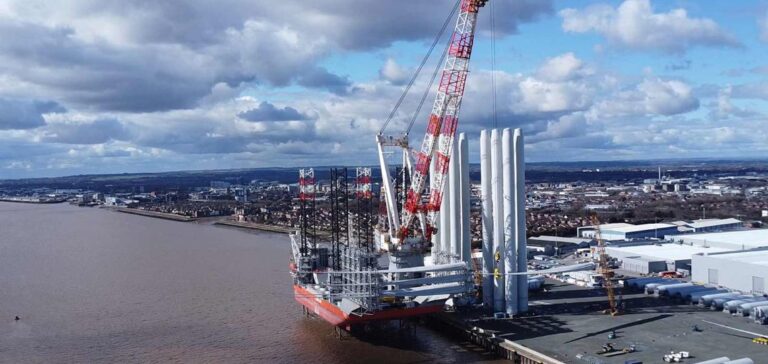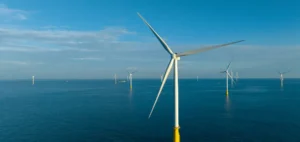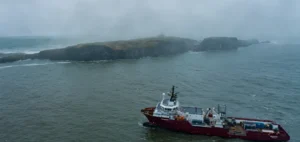RWE, one of the world’s leading companies in offshore wind energy, has recently reached significant milestones in the construction of its 1.4 gigawatt (GW) Sofia offshore wind farm. Located on the Dogger Bank, 195 kilometers off the northeast coast of the UK, this project represents a major investment in renewable energy.
Last week, the state-of-the-art Wind Peak turbine installation vessel arrived on site. This vessel, supplied by Cadeler, is responsible for transporting and installing the 14 megawatt (MW) turbine components on the project site. This arrival marks a crucial step in the project’s progress, with the installation of the first turbines expected in the coming weeks.
Production of the first recyclable blades
Meanwhile, Siemens Gamesa has completed the manufacturing of the first recyclable wind turbine blades in Hull. A total of 150 recyclable blades will be produced, with 50 to be installed on the 100 turbines that will make up the Sofia wind farm. This initiative highlights the industry’s commitment to integrating more sustainable solutions in wind energy production.
Progress of offshore and onshore infrastructure
So far, more than half of the offshore turbine foundations have been installed. Additionally, the offshore converter station, the onshore substation, and both onshore and offshore export cables are in place, paving the way for the first electricity generation expected later this year.
Sven Utermöhlen, CEO of RWE Offshore Wind, stated: “Sofia is RWE’s largest offshore construction project globally and remains on track and on budget to generate first power this year. These impressive advancements reflect the expertise of our RWE team and the strong support from our supply chain partners, ensuring the successful delivery of flagship projects like Sofia.”
Contribution to the UK’s energy goals
Once fully operational, the Sofia wind farm will make a significant contribution to the UK’s clean energy goals by 2030. With a capacity to power the equivalent of more than 1.2 million typical homes, this project demonstrates the essential role of offshore wind in the country’s energy transition.
The full commissioning of the wind farm is scheduled for 2026, further cementing the UK’s position as a global leader in offshore wind energy.





















